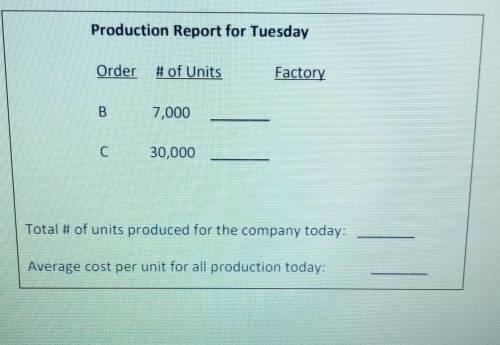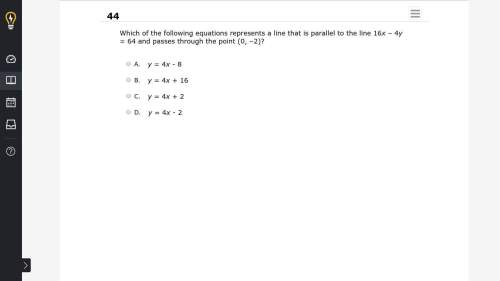
Mathematics, 02.06.2021 07:00 Yamari000
4. Analysis and Making Production Decisions
You have now provided your company's management with powerful tools that model the cost of production in the three factories. (Omaha, Seattle or Wichita). When you get an order for a certain number of units, you can be informed of the cost that would be incurred by each factory if chosen to fulfill the order. In reality, the decision must also consider many other factors, but in our scenario, we want to fill our orders at the lowest average cost per unit. Consider each of the following questions as a separate, unrelated day of business.
a. On Monday, you have a single request: Order A for 15,000 units. It must be fulfilled by a single factory. To which factory do you sent the order? Explain your decision. Support your argument with no numbers.
b. On Tuesday, you have two orders. You may sent each order to a separate factory OR both to the same factory. If they are both sent to be fulfilled by a single factory, you must use the total of the two orders to find that factory's cost per unit for production on this day. Remember that the goal is to end the day with the lowest cost per unit to produce the company's products. Order B is 7,000 units and Order C is 30,000 units.
* First, consider giving the orders to separate factories. Use these values and the following formula to calculate the average weight cost per unit.
_(cost per unit B)(#of units) + (cost per unit C)(# of units)_
_
Total # of Units
* Second, consider sending both orders to a single factory that has the lowest cost per unit to produce 37,000 units.
* Compare the two options. Decide how you will sent the orders out, and document your decision by completing the daily production below.


Answers: 2


Other questions on the subject: Mathematics


Mathematics, 21.06.2019 16:30, ryleepretty
Quadrilateral ghjk has vertices g(2, 3), h(8, 2), j(6, 8), and k(3, 6). it is transformed according to the rule t(–4, –5). what are the coordinates of g”? (–7, 3) (–2, 2) (–1, –7) (2, –2)
Answers: 2

Mathematics, 21.06.2019 17:00, charitysamuels
Can someone pls ! pls answer all. no explanation needed..
Answers: 1
You know the right answer?
4. Analysis and Making Production Decisions
You have now provided your company's manageme...
You have now provided your company's manageme...
Questions in other subjects:

Mathematics, 14.04.2020 12:22




Mathematics, 14.04.2020 12:23



Mathematics, 14.04.2020 12:23

English, 14.04.2020 12:23

French, 14.04.2020 12:23




